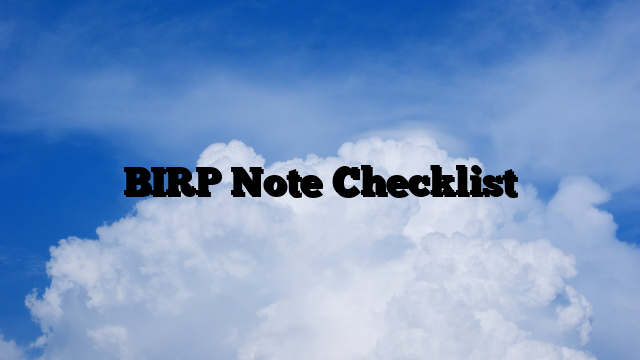In the diverse landscape of healthcare documentation, two prominent formats stand out: SOAP and BIRP notes. While both are essential tools for recording patient interactions, they differ significantly in structure and application. This blog aims to demystify these differences in simple terms, providing a clear understanding of each format and how they are uniquely suited to various healthcare settings.
SOAP Notes: The Classic Four-Part Structure
S – Subjective
The ‘Subjective’ component of SOAP notes is where the patient’s perspective takes the center stage. It includes the patient’s descriptions of their symptoms, feelings, and perceptions. This is essentially what the patient reports about their own health condition, including their personal observations and concerns.
O – Objective
‘Objective’ refers to the tangible, measurable data that healthcare providers observe. This includes vital signs, physical examination findings, lab results, and other measurable indicators of the patient’s health status. It’s the factual, unbiased information that forms the backbone of clinical assessment.
A – Assessment
Assessment is the stage where healthcare professionals interpret the subjective and objective information. This involves making clinical judgments about what the symptoms and signs might indicate. It’s a critical step where a diagnosis is often formulated, or differential diagnoses are considered.
P – Plan
The ‘Plan’ segment outlines the course of action for addressing the patient’s condition. This can involve medication prescriptions, further tests, referrals to specialists, or a plan for follow-up care. It’s a forward-looking component, focusing on the next steps in the patient’s treatment journey.
BIRP Notes: A Behavioral Health Focus
B – Behavior
Behavior in BIRP notes refers to the patient’s behaviors, thoughts, and emotions as observed or reported. This includes both verbal and non-verbal cues, like body language or emotional responses. It’s particularly relevant in mental health settings where understanding a patient’s behavior is crucial for effective treatment.
I – Intervention
Intervention documents the strategies or techniques used during the session. This could be therapeutic exercises, counseling techniques, or any other method employed to address the patient’s issues. It’s a detailed account of what the healthcare provider did during the session.
R – Response
Response details how the patient reacted to the interventions. This includes their emotional, cognitive, and behavioral reactions. It’s a critical section for gauging the effectiveness of the treatment or intervention and understanding the patient’s progress.
P – Plan
Similar to SOAP, the Plan in BIRP notes outlines the future course of action. This could include changes in therapy techniques, future session focuses, or any homework for the patient. It’s a tailored plan based on the patient’s response and overall treatment goals.
Key Differences Between SOAP and BIRP Notes
While both SOAP and BIRP notes serve to document patient care, their focus and structure differ:
Purpose and Focus:
SOAP notes are more widely used across various medical fields, focusing on a broad range of clinical conditions. BIRP notes, on the other hand, are more specialized for mental health and behavioral therapy settings.
Structure and Content:
SOAP notes follow a more clinical and medical approach, with a strong emphasis on objective data and clinical assessment. BIRP notes delve deeper into the psychological and behavioral aspects of patient care, prioritizing the patient’s emotional and behavioral responses.
Applicability:
SOAP notes are versatile and can be used in general medicine, nursing, physical therapy, and more. BIRP notes are particularly useful in counseling, psychiatry, and psychology, where understanding patient behavior is key.
Patient Engagement:
In BIRP notes, there’s a significant emphasis on how the patient engages with and responds to interventions. SOAP notes, while also considering patient engagement, tend to be more focused on objective measures and clinical outcomes.
Conclusion
Understanding the differences between SOAP and BIRP notes is crucial for healthcare professionals to effectively document patient care. While SOAP notes offer a broad, clinical approach suitable for various medical fields, BIRP notes provide a more focused framework for behavioral health settings. Recognizing which format to use based on the context is key to ensuring comprehensive, accurate, and effective patient documentation. Both formats, with their unique strengths, contribute significantly to the quality of patient care and treatment planning, highlighting the importance of tailored documentation in healthcare.






